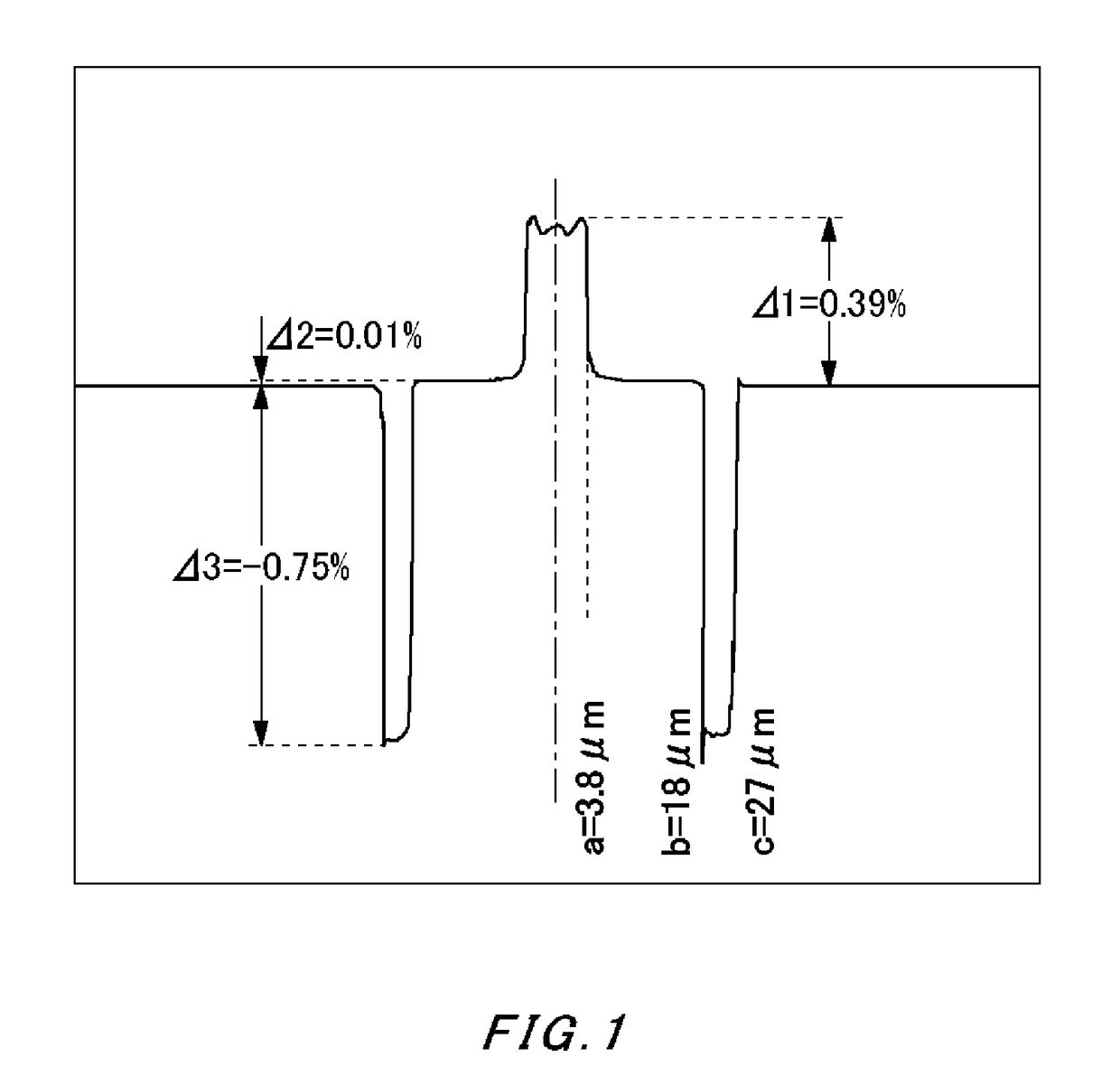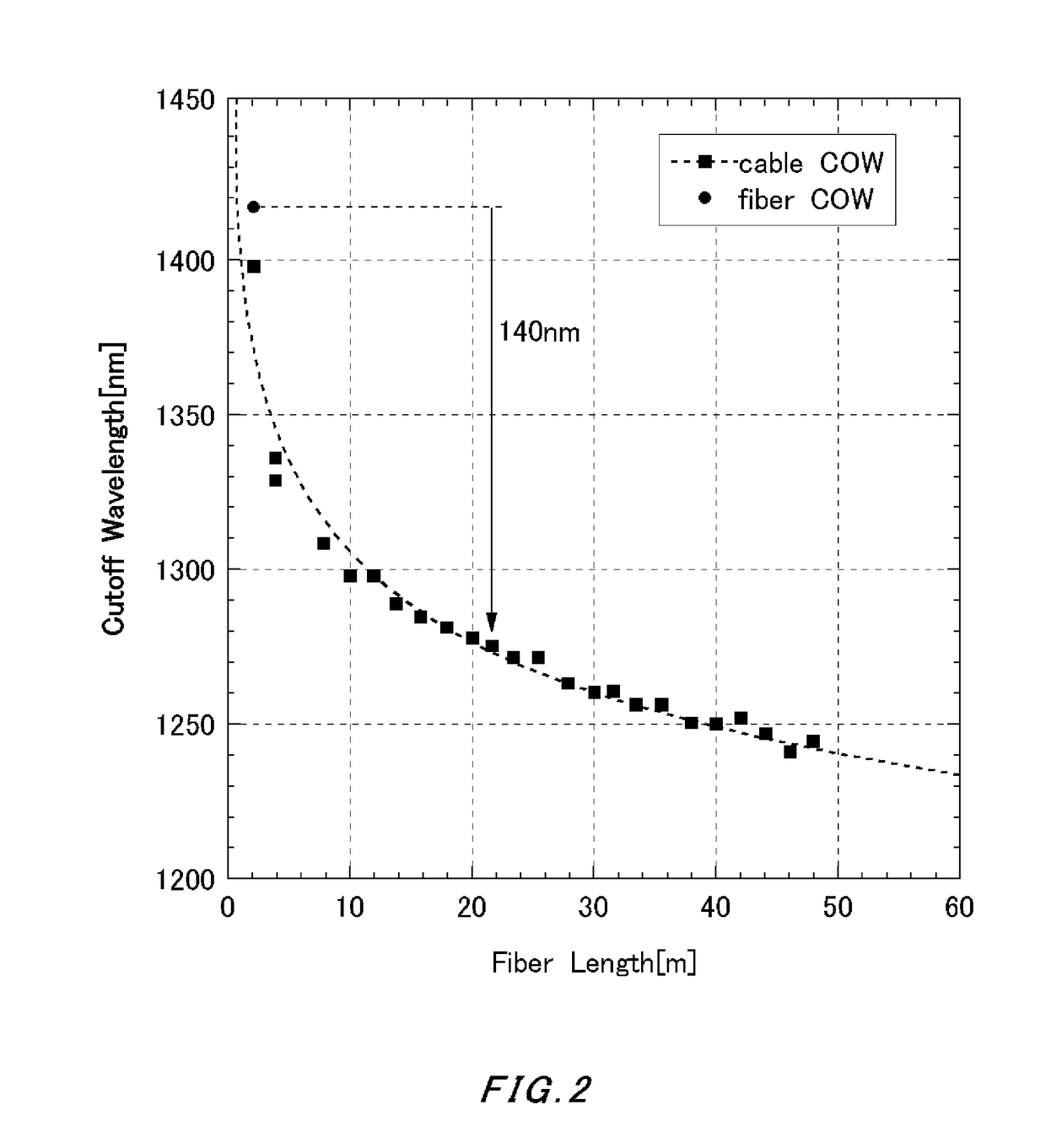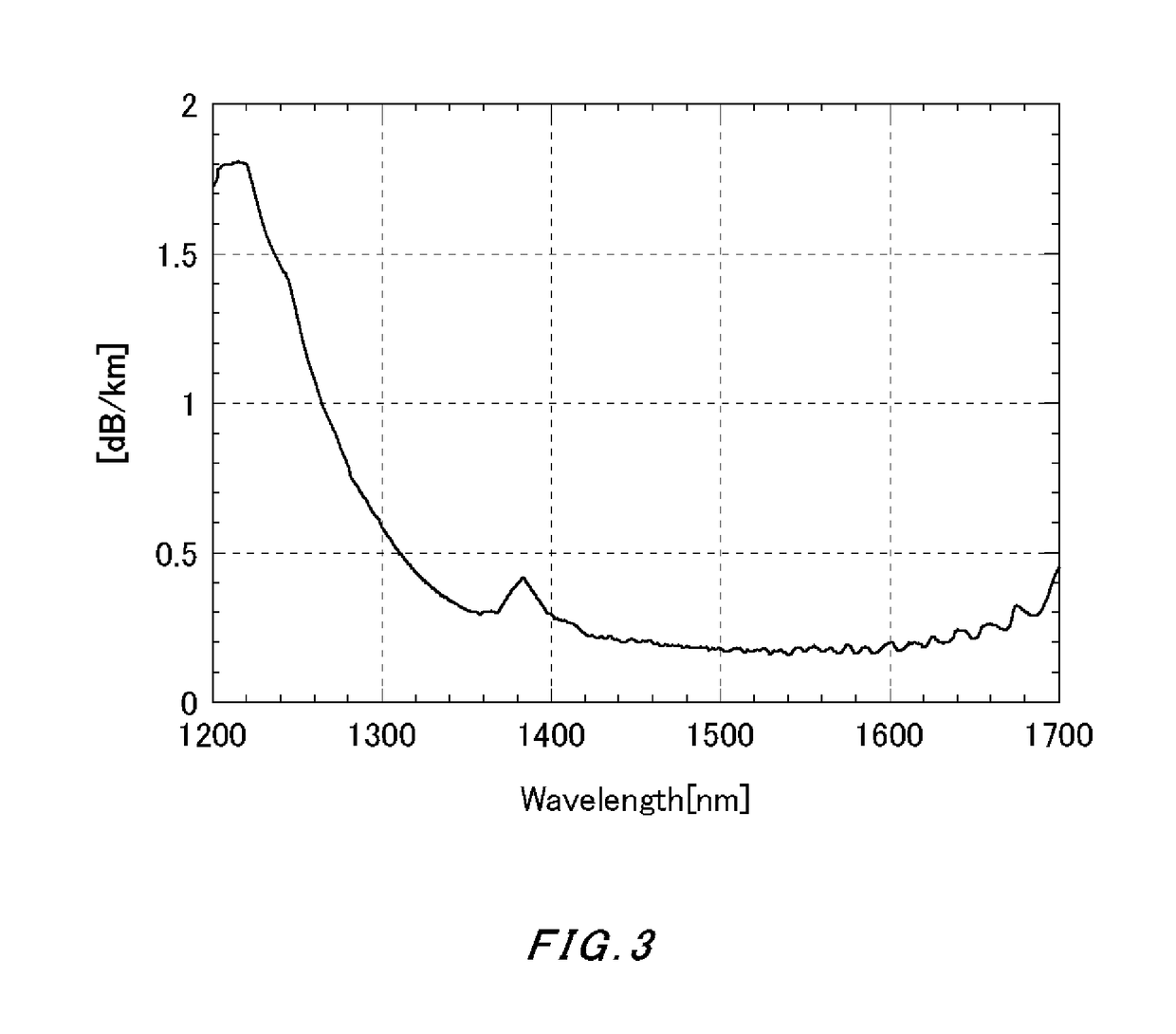Optical fiber
a technology of optical fiber and fiber, applied in the field of optical fiber, can solve the problems of inability to easily transmit a large amount of information, loss of transmission, exponential fashion, etc., and achieve the effect of wide transmission band and improved bending characteristics
- Summary
- Abstract
- Description
- Claims
- Application Information
AI Technical Summary
Benefits of technology
Problems solved by technology
Method used
Image
Examples
embodiment example 1
[0028]FIG. 1 shows a refractive index distribution of an optical fiber manufactured in the present Embodiment Example 1.
[0029]First, a first core shown in the drawing is manufactured using a VAD method, which is then stretched into a desired diameter to produce a core material, to which a second core is provided at an exterior of the core material. Further thereon, fluorine is added to form a third core having a refractive index lower than a silica level, onto which, a clad is added, to manufacture an optical fiber base material. This base material is drawn to create an optical fiber having a cladding diameter of 125 μm, which is then coated with urethane acrylate, thereby obtaining an optical fiber wire having a diameter of 250 μm.
[0030]In this optical fiber, the radius of the first core “a” is 3.8 μm, the radius of the second core “b” is 18 μm, and the radius of the third core “c” is 27 μm (the third core having a smaller refractive index). Moreover, the maximum Δ1 of the specific...
embodiment example 2
[0034]A surface of the optical fiber base material manufactured in Embodiment Example 1 is scraped off, which is then drawn to manufacture an optical fiber having a cladding diameter of 125 μm, which is then coated with urethane acrylate, thereby obtaining an optical fiber wire having a diameter of 250 μm.
[0035]The specific refractive index differences Δ1, Δ2, and Δ3 for the respective cores of the manufactured optical fiber are the same as those in Embodiment Example 1, except that the radius of each core is 1.15 times larger than in the case of Embodiment Example 1. Specifically, the radius of the first core “a” is 4.4 μm, the radius of the second core “b” is 21 μm, and the radius of the third core “c” is 31 μm.
[0036]FIG. 4 shows a relation between the cutoff wavelength and the fiber length. The drawing shows that the fiber cutoff wavelength is 1625 nm and the cable cutoff wavelength is 1430 nm, meaning that the difference therebetween is 195 nm.
[0037]Using an optical fiber having...
embodiment example 3
[0039]A porous glass base material integrating a first core and a second core is manufactured using a VAD method, vitrified into a transparent glass, which is then stretched into a desired diameter to produce a core material. Further thereon, fluorine is added by providing porous glass at an exterior, to form a third core having a refractive index lower than a silica level, onto which, a clad is added, to manufacture an optical fiber base material. FIG. 6 shows a result of measuring the refractive index distribution of the base material using a commercially available preform analyzer.
[0040]This base material is drawn to create an optical fiber having a cladding diameter of 125 μm, which is then coated with urethane acrylate, thereby obtaining an optical fiber wire having a diameter of 250 μm. Thus obtained optical fiber has a diameter smaller than that of the base material while maintaining a similar shape to the shape of the base material, and so its refractive index distribution w...
PUM
 Login to View More
Login to View More Abstract
Description
Claims
Application Information
 Login to View More
Login to View More - R&D
- Intellectual Property
- Life Sciences
- Materials
- Tech Scout
- Unparalleled Data Quality
- Higher Quality Content
- 60% Fewer Hallucinations
Browse by: Latest US Patents, China's latest patents, Technical Efficacy Thesaurus, Application Domain, Technology Topic, Popular Technical Reports.
© 2025 PatSnap. All rights reserved.Legal|Privacy policy|Modern Slavery Act Transparency Statement|Sitemap|About US| Contact US: help@patsnap.com



